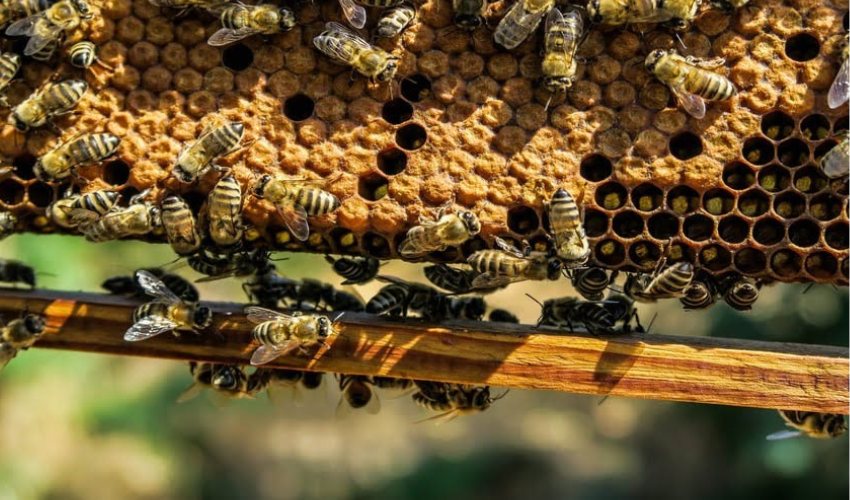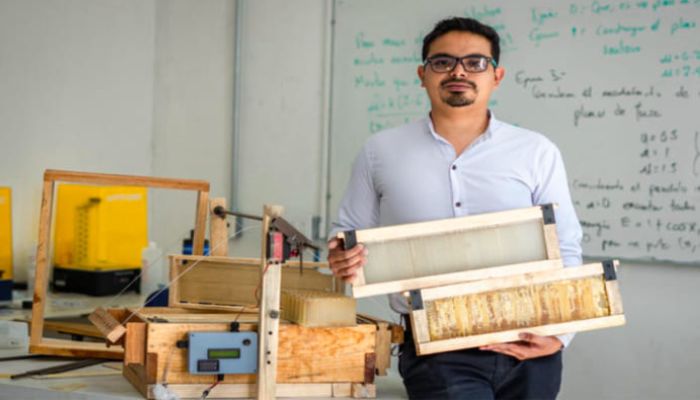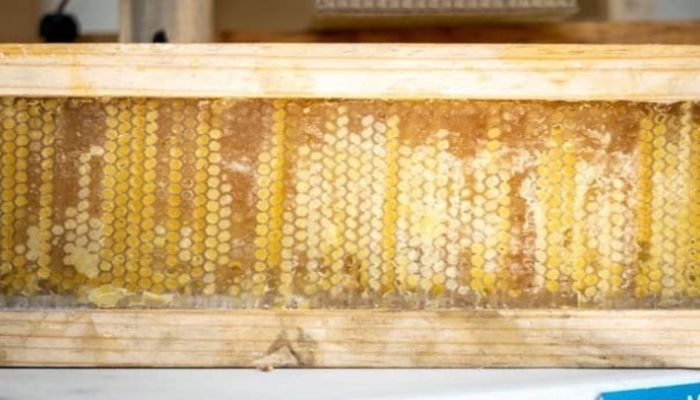University of Chapingo Student Boosts Honey Production With 3D Printed Hives

The changes that ecosystems undergo as a result of human action or natural causes directly affect the species that live there. Bees, in particular, have felt the repercussions of human actions, facing challenges such as habitat loss and pesticide exposure in agricultural areas. Recognizing the crucial role bees play in global food security, concerted efforts have been underway to address these issues. Embracing innovative solutions like 3D printing, as seen in projects such as HIIVE and LACRIMA, has become pivotal in this endeavor. Adding to this progress, a student from the Autonomous University of Chapingo in Texcoco, Mexico, has developed 3D printed hives aimed at improving bee habitats and enhancing their well-being.
The intricate construction of hives by bees involves the use of wax and other natural secretions to form their habitat, a process essential for their survival. In parallel, beekeepers craft hive boxes designed to attract bees and facilitate honey production. However, with the global decline in bee populations, there’s a pressing need for innovative approaches to enhance bee habitats. In this pursuit, 3D printing has emerged as a promising avenue, as the technology introduces a novel solution: 3D printed hives. But what sets these apart from traditional hives, and how can 3D printing revolutionize hive production?

The resin 3D printer used is of the Anycubic brand.
Systematic 3D Printed Hives
Crafted by José Francisco Arteaga Alarcón, a master’s student at the University of Chapingo in Mexico, the 3D hive aims to revolutionize honey production. Leveraging resin 3D printing technology, Arteaga Alarcón precisely replicated the hexagonal structures of hives, alleviating bees from the laborious task of constructing their habitat. With this innovative approach, bees can focus solely on honey production, potentially reducing stress, enhancing proliferation, and fostering the reproduction of vital plant species.
While it is true that this hive changes the bees’ natural process for making honey, it also means better conditions for the species as it reduces their working times. In addition, factors such as temperature, noise, and lack of space or ventilation that cause stress in the bees could be solved. This is increasingly common in traditional hives. With this model, it is anticipated that the stress levels of bees will decrease significantly. Similar to their adaptation to producing honey in hives crafted by beekeepers, it is predicted that they will readily acclimate to this new technological advancement.

3D printed beehive (Photo Credits: Voragine)
Given that the university in question falls under the purview of the country’s Ministry of Agriculture and Rural Development, it is poised to receive ample support for future research endeavors. According to the Secretariat, “Mexico is one of the countries with the greatest diversity of bees, with more than two thousand species and genera.” In addition, “beekeeping activity reports an average annual production that exceeds 60 thousand tons of honey from two million hives and benefits more than 43 thousand beekeepers and their families”.
What do you think of these 3D printed hives? Let us know in a comment below or on our LinkedIn, Facebook, and Twitter pages! Don’t forget to sign up for our free weekly newsletter here, for the latest 3D printing news straight to your inbox! You can also find all our videos on our YouTube channel.
*Cover Photo Credits: Pixabay






